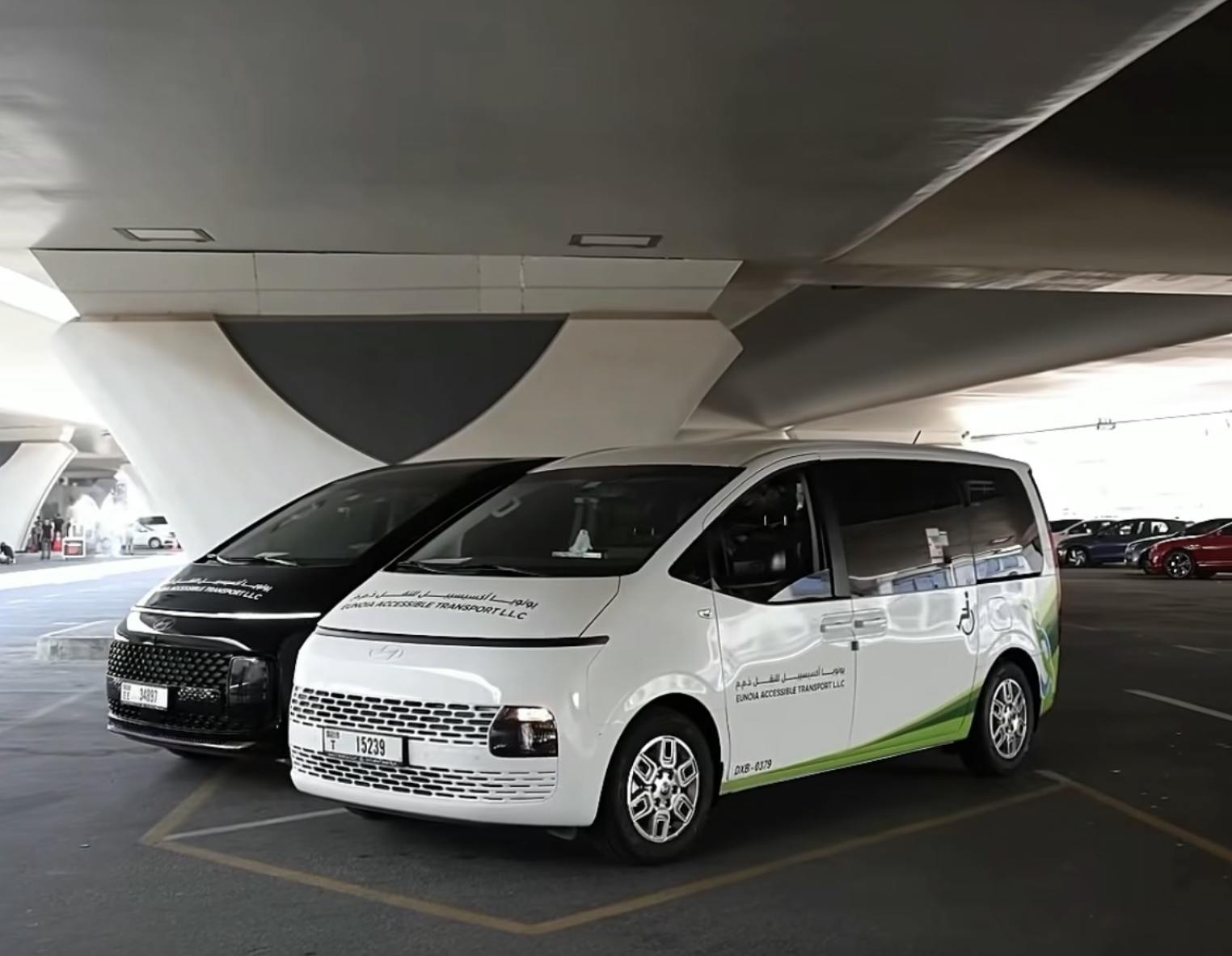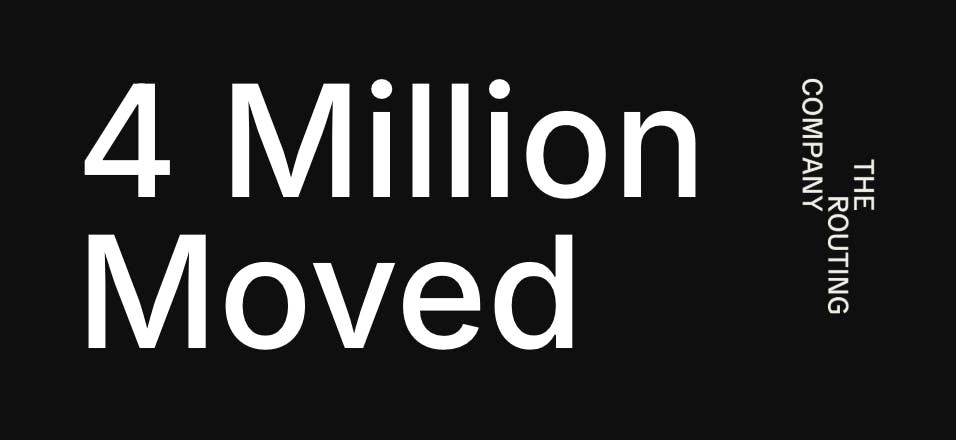
How TRC leverages best practices from North America and Europe to make on-demand transportation better
In the words of The Routing Company’s (TRC) Partnerships Lead Europe, Dami Adebayo, ‘on-demand transport’ (known as ‘on-demand transit’ in North America) can be best described as “flexible transport services which live at the intersection of taxi and conventional bus services”. Throughout this article we’ll refer to it as “ODT”.
Although flexible and shared mobility services have existed for decades as informal community-based arrangements, digitalization has propelled their potential into a new realm. Through new technologies, ODT can now react to demand in real time to reach optimal efficiency, flexibility, and high pooling rates. It also calls for sufficient infrastructure, political will, and engagement from public transport authorities.
Having done 45 deployments across five countries, with more than 750,000 passengers moved to date, TRC is continuously improving and iterating its products based on a wide range of locally diverse transportation challenges. Charlotte Veldkamp, our Partnerships Manager Europe, recently discussed the current market state of ODT with Stephen Kuban and Lukas Foljanty, TRC’s respective Directors of Business Development for North America and Europe.
Charlotte: Lukas, you track ODT’s progress with your On-Demand Ridepooling World Map. About a year ago, you were cited in an article in UK-based newspaper The Guardian about how you believe the industry globally “may have reached a tipping point”. Where do we stand now?
Lukas: With over 1,400 projects implemented globally in the last 10 years, it’s safe to say that ODT has passed this tipping point. It is now an important means to help public transport networks tackle some of their systemic challenges, especially in lower demand areas or time periods.
In the last years, we have consistently seen over 200 new projects deployed yearly, proving the market’s robust growth. ODT is now embraced by an ever growing number of public transport authorities across the globe.
Charlotte: Stephen and Lukas, in your view, what’s the biggest benefit ODT can bring to your market?
Lukas: In Europe, it’s the missing link between the convenience and flexibility of individual modes of transport, and the efficiency and sustainability of shared, collective modes of transport. On-demand bus services play a vital role as efficient public mobility service when and where scheduled bus lines are not an option.
Yet we also see a tremendous opportunity in addressing the need for attractive, accessible, user-centric shared mobility options that expand the service offering of public transport.
Stephen: ODT gives true meaning to the term ‘public transport network’ by closing the gap to other transportation modes. It’s in a place now where you can operate a seamless network using all sorts of modes that are all connected to each other.
This is a huge potential offered by commingling services, which we can discuss in more detail later. There’s also an environmental and social bonus: people are getting out of their cars!
We actually recently released data from our Ride Pingo app showing insights into our user behaviors: 31% of our trips globally occur in place of single occupancy vehicle trips. In the United States, and I’m sure this applies elsewhere too, we do also see that ODT technologies bring innovation and increased private sector investment into public transport.
Charlotte: On that point, where do both the USA and Europe stand on the path towards integration of on-demand solutions into public transport?
Lukas: Ensuring a seamless passenger experience is crucial for us at The Routing Company. This is why we support deep integration to public transport networks. We offer this through our intermodal transfer option Transit Connect™, our multimodal trip planner Pingo Journey™ or Transit Protect™ which allows public transport agencies to block on-demand trips if a high-quality fixed-route public transport alternative is available.
We believe that all public on-demand services will eventually pursue a deep integration, which our Pingo platform already fully supports.
Stephen: There’s definitely more of an understanding in the industry now that ODT is not just a hide-railing alternative or an ‘app’. Of course we need reliable apps for our users, but the algorithms at the core of our product are what helps quickly create efficient routes and schedules.
And, riders need to connect into the rest of the network, meaning they need to be able to transfer from one mode to another, reliably and seamlessly so. That’s why Pingo Journey™ and Transit Connect™ are taking off in the US. It’s time to integrate.
Lukas: Yes, and European markets differ in their maturity, but there’s an overall clear trajectory. Successful pilots, which were not always deeply integrated into wider public transport networks, have been moving towards permanent deployments. It’s key to understand the importance of delivering ODT solutions at scale, to maximize their impact.
Productivity is an instrumental factor and we believe it must be noticeably greater for on-demand than for legacy systems. Otherwise, on-demand services cannot contribute to the growth of the modal share of public transport, which is desperately needed for the environment, the livability of our cities, and social inclusion.
Charlotte: How do general perceptions of public transport vary for end-users in your markets?
Stephen: There’s a whole range of reasons as to why transit ridership in North America is still limited and why car usage is still the norm. It’s partly cultural; many Americans expect to own a car. Outside of the densest cities, taking public transit can be perceived as a “lesser” experience. ODT is helping to change that, because its experience is just so much more positive than the unfair expectation that comes with the word “public transit.” It’s exciting to be part of that shift.
Lukas: Inhabitants of many European countries, particularly in Northern Europe, are accustomed to a dense public transport network, supported by heavy public sector investment. The user expectation of a high quality service is not always met – despite European services rating well in comparison to regions like North America.
Public transport challenges vary between rural, suburban, and urban areas, but an overarching issue is that public transport networks evolved organically over decades. They therefore struggle to adapt to radically changing user expectations, influenced by new modes of consumption, like the on-demand availability of goods and services.
Stephen: Which is why we’re convinced that ODT can transform public transit to better reflect changing expectations of both users, and equally importantly, of non-users. That’s what I was getting at before. The modal share of public transport needs to grow to attract new users, who may have been hesitant towards shared transport in the past. Flexible, readily available, convenient on-demand services play a vital role here.
Q: So which elements do stakeholders have to focus on to meet these passengers’ expectations?
Stephen: Despite different expectation levels, we see similarities in North America in Europe when it comes to the process of implementing ODT. We look at service design in a similar manner, with attention to user needs. Operators also run similar actions in both markets, despite differences. Scheduling trips, managing riders, dispatching and reporting – all follow a similar process.
Lukas: Complex stakeholder landscapes traditionally made it challenging for agencies to place user experience at the heart of their strategies. But passengers are voting with their feet. While the capacity to innovate varies between public transport agencies (PTAs), it’s very clear that public transport needs to become better at understanding and satisfying user expectations.
Innovative technologies like TRC’s Pingo platform give PTAs the tools to shift towards user-centric service design, while acknowledging the requirements and dependencies of sophisticated public transport networks.
Charlotte: While we’re focusing on end users, I’m curious about your view on how on-demand technologies can make public transport more accessible and equitable.
Lukas: This is an area where we’re really taking learnings from the United States and looking at how we can apply them to Europe. The European Union was much slower than the United States (with the Americans with Disabilities Act or “ADA”) in making public transport accessible to everyone by law. European PTAs’ attempts focus on redesigning infrastructure, which is an honorable but slow and expensive process. American PTAs, on the other hand, introduced demand-responsive paratransit services early on.
While paratransit services were formerly kept separate from open-to-all public transport services, technologies like Pingo Access™ allow PTAs to commingle these services – meaning vehicles can be used for both paratransit and regular on-demand services at the same time – thereby maximizing budget and significantly improving the user experience.
However, in many European countries, these services are orchestrated by different public authorities with siloed responsibilities and budgets. A solution must be addressed on a policy level first. Finland is a great example, with its recent legislation to merge different social welfare services.
Stephen: But it’s also about more than just applying tech innovations to paratransit. We succeed when we incorporate ODT technologies into paratransit built from first principles – building off the successful foundations of legacy systems and putting operating staff first. But at the same time, there’s a huge shift to make paratransit more equitable to high-frequency routes.
I think there’s a whole paradigm about to break: there are more ways to deliver service than the limits of the ADA, and I think there are actually more cost-effective ways to do it, too. For example, what if non-ADA paratransit could get a rider the first/last-mile to a high-frequency bus, totally on-demand? It’s cost-effective and it’s more equitable. I could talk about this for hours.
Charlotte: And maybe our readers would like you to! But I have a last question. How do you think transport in your home turf can be advanced through learnings from other markets?
Stephen: For context, our team spans ten countries, with TRC directly supporting operations and customer growth through hubs in Brazil, Canada, Germany, Hungary, Poland, Spain, Switzerland, the Netherlands, the United Kingdom, and the United States. Taking use cases from different markets as a tool for product innovation is at the core of The Routing Company.
Europe is more advanced than the US when it comes to integration and Mobility as a ServiceMaaS), particularly in rural areas. We’re bringing that knowledge to our activities in North America, which is moving in that direction. Our suite of Pingo products, which Lukas mentioned earlier, were directly informed by how integrated European transit is. And the US has been highly receptive to this!
Lukas: I do admire the openness to innovation of many North American PTAs. Perhaps it stems from the idea that public transport needs radical transformation to step out of its niche existence. Or that budget constraints make innovative solutions more than “nice-to-have”: a necessity. Either way, I would encourage European authorities to embrace innovation and challenge traditional assumptions around user expectation and service design. Thankfully, we find some real role models in that regard in Europe as well.


